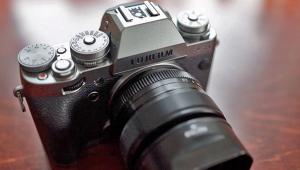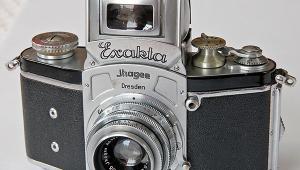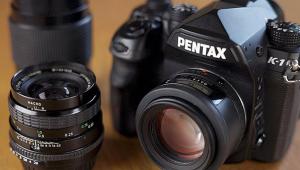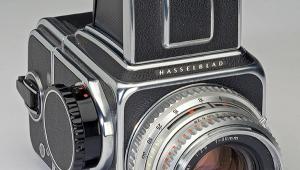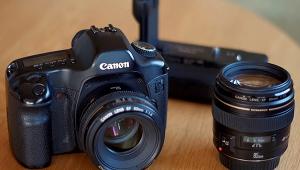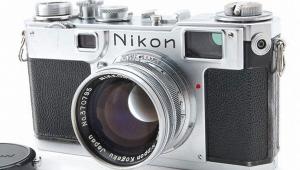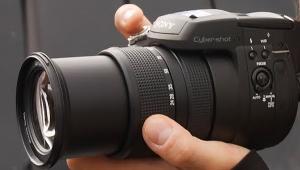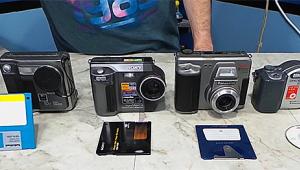Clockwork Cameras; Wind-On Advance Through Time
In the days before digital, most film cameras had built-in, battery-driven motor drives. But cameras with motor drives were around long before the electronic age, the only difference being that they ran by clockwork.
Say clockwork to collectors and Robot is the name that springs to mind. These cameras were the brainchild of Heinz Kilfitt, a German watchmaker and prolific photographic inventor. He sold the idea to Hans Berning, who set up Otto Berning & Co. in Düsseldorf to manufacture it.
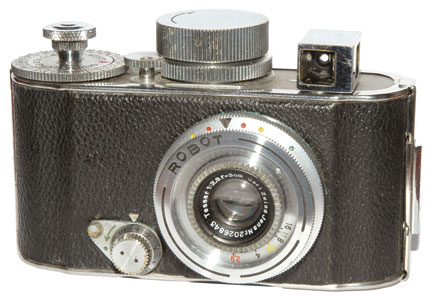 |
|
|
The first Robot, introduced in 1934, was a small camera with a large knob on top to wind the clockwork motor. It took 35mm but with the film running from supply cassette to take-up cassette there was no need for it to be rewound after shooting.
For the next half century Robot cameras continued to develop, becoming ever more sophisticated and highly regarded. More models of the Robot were produced than of any other clockwork-driven camera. They were better specified and, of all the clockwork cameras, they are still considered the best. But they were by no means the first.
That honor goes to Le Pascal, made in France by Japy et Cie in 1898. This was a small, box-type camera, with a leather-covered wood and metal body. Before making any exposures, the film was wound all the way onto the take-up drum, which also had the effect of tensioning the spring of the motor. Thereafter, as each exposure was made by tugging on a string protruding from the body, the film automatically rewound, frame by frame, back onto its original spool.
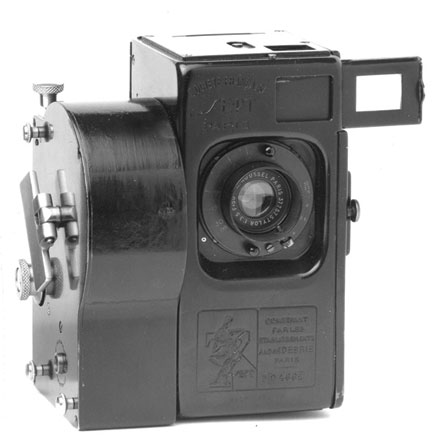 |
|
|
In 1922, the Debrie Sept was launched, to take 35mm film, three years ahead of the Leica, more usually recognized as the first 35mm camera. The Sept was a square-cornered box shape with the motor housing mounted on the side. This advanced film after each exposure and could also be adjusted for a continuous run, turning the Sept into a short-run movie camera.
 |
|
|
The Sept was so called because the word is French for seven, the number of ways it could be used: as a still camera; as a sequential camera for taking a rapid sequence of still pictures; as a cine camera; with the attachment of a suitable light source, as a still projector; likewise, as a cine projector; likewise, as an enlarger; with an unexposed film alongside a developed film, to print a strip of negatives as a positive filmstrip.
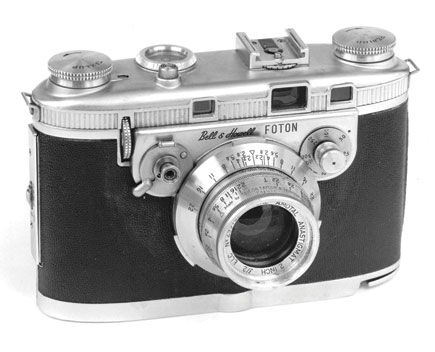 |
|
|
The majority of clockwork cameras used 35mm, but in 1924 Ansco applied the idea to paper-backed roll film. The Semi-Automatic Ansco looked like a traditional folding rollfilm camera with the addition of a key to wind the clockwork motor in place of a more traditional film wind knob, and a small lever protruding from the body. Pressing and releasing the lever wound the film. The following year Ansco launched the improved Automatic No. 1A, which coupled the film wind with the shutter release.
For clockwork-driven cameras, the 1930s were dominated by the aforementioned Robots. Then came World War II, after which, in 1947, the English Wray company took out a patent on a revolutionary 35mm Single Lens Reflex (SLR) with a built-in motor drive. The camera never went into production, and no other manufacturer produced a clockwork-driven SLR, although a few offered add-on clockwork accessories.
The American Bell & Howell company, best known for making movie cameras, was next on the scene in 1948 with a clockwork-driven still camera called the Foton. It was a 35mm camera with a screw-fit standard lens and bayonet lugs for its telephoto lenses.
- Log in or register to post comments
